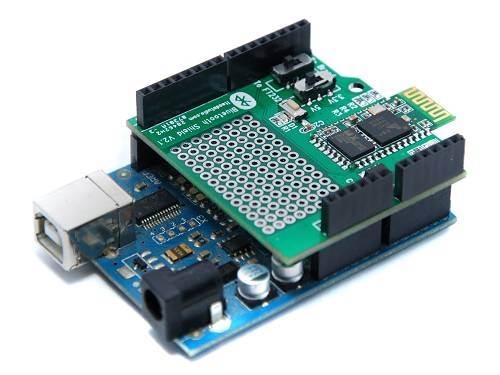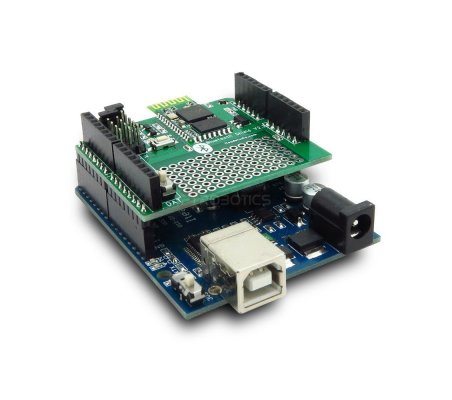

BLUETOOTH SHIELD BLUETOOTH
It's is one of the more fundamental Bluetooth profiles (Bluetooth's original purpose was to replace RS-232 cables after all). SPP is great for sending bursts of data between two devices.

BLUETOOTH SHIELD SERIAL
If you're replacing a serial communication interface (like RS-232 or a UART) with Bluetooth, SPP is the profile for you. Let's take a look at a few of the more commonly-encountered Bluetooth profiles. For two Bluetooth devices to be compatible, they must support the same profiles. A hands-free Bluetooth headset, for example, would use headset profile (HSP), while a Nintendo Wii Controller would implement the human interface device (HID) profile. The profile(s) a Bluetooth device supports determine(s) what application it's geared towards.

While Bluetooth specifications define how the technology works, profiles define how it's used. Some modules are only able to operate in one power class, while others can vary their transmit power.īluetooth profiles are additional protocols that build upon the basic Bluetooth standard to more clearly define what kind of data a Bluetooth module is transmitting. There are three defined classes of power: Class Number The transmit power, and therefore range, of a Bluetooth module is defined by its power class. "0000" or "1234") to a 16-character alphanumeric string.
BLUETOOTH SHIELD CODE
The PIN code can range in length and complexity from four numbers (e.g. Older, legacy (v2.0 and earlier), pairing processes involve the entering of a common PIN code on each device. Other times pairing involves matching 6-digit numeric codes. Sometimes pairing is a simple "Just Works" operation, where the click of a button is all it takes to pair (this is common for devices with no UI, like headsets). The flow of the authentication process varies and usually depends on the interface capabilities of one device or the other. Pairing usually requires an authentication process where a user must validate the connection between devices. The also share a common secret key, which allows them to bond whenever they're together in the future. When devices pair up, they share their addresses, names, and profiles, and usually store them in memory. No UI interactions are required!īonds are created through one-time a process called pairing. When I start up my car, for example, the phone in my pocket immediately connects to the car's Bluetooth system because they share a bond. Bonded devices automatically establish a connection whenever they're close enough. When two Bluetooth devices share a special affinity for each other, they can be bonded together. A master can command a slave to "park", and that slave will become inactive until the master tells it to wake back up.

Active Mode - This is the regular connected mode, where the device is actively transmitting or receiving data.While connected, a device can either be actively participating or it can be put into a low power sleep mode. Connection - After a device has completed the paging process, it enters the connection state.Before this connection can be initiated, each device needs to know the address of the other (found in the inquiry process). Paging (Connecting) - Paging is the process of forming a connection between two Bluetooth devices.One device sends out the inquiry request, and any device listening for such a request will respond with its address, and possibly its name and other information. Inquiry - If two Bluetooth devices know absolutely nothing about each other, one must run an inquiry to try to discover the other.Connection ProcessĬreating a Bluetooth connection between two devices is a multi-step process involving three progressive states: Sometimes the unique digits of the address might be included in the name to help differentiate devices. They can be up to 248 bytes long, and two devices can share the same name. +Version: 2.The rules for device names are less stringent. Default 9600 and Both NL & CR Some Helpful AT commands (Troubleshooting) For TEST Command Set the Baudrate according from the code. # include SoftwareSerial mySerial ( 2, 3 ) // RX, TX // 2013:3:40964 void setup ( ) Serial Monitor


 0 kommentar(er)
0 kommentar(er)
